Discover 11 hidden attractions, cool sights, and unusual things to do in Nazareth (Israel). Don't miss out on these must-see attractions: Tel Megiddo, Basilica of the Annunciation, and Greek Orthodox Church of the Annunciation. Also, be sure to include St. Joseph's Church in your itinerary.
Below, you can find the list of the most amazing places you should visit in Nazareth (HaZafon).
Table of Contents
Tel Megiddo

Also known as: תל מגידו
Protected site. Tel Megiddo is the site of the ancient city of Megiddo, the remains of which form a tell, situated in northern Israel near Kibbutz Megiddo, about 30 km south-east of Haifa. Megiddo is known for its historical, geographical, and theological importance, especially under its Greek name Armageddon. During the Bronze Age, Megiddo was an important Canaanite city-state and during the Iron Age, a royal city in the Kingdom of Israel.
Megiddo drew much of its importance from its strategic location at the northern end of the Wadi Ara defile, which acts as a pass through the Carmel Ridge, and from its position overlooking the rich Jezreel Valley from the west.
Excavations have unearthed 20 strata of ruins since the Neolithic phase, indicating a long period of settlement. The site is now protected as Megiddo National Park and is a World Heritage Site.[1]
Basilica of the Annunciation
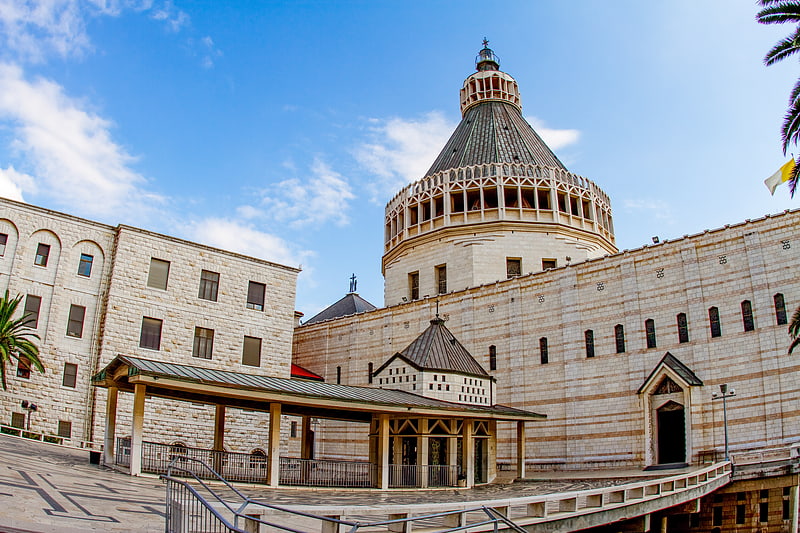
Also known as: כנסיית הבשורה
Church on the site of the Annunciation. This article refers to the basilica in Nazareth. For information on the church associated with the Blagoveschenskaya Tower in Russia, see Kremlin towers or Cathedral of the Annunciation.
The Church of the Annunciation, sometimes also referred to as the Basilica of the Annunciation, is a Catholic church in Nazareth, in northern Israel. It was established over what Catholic tradition holds to be the site of the house of the Virgin Mary, and where the angel Gabriel appeared to her and announced that she would conceive and bear the Son of God, Jesus – an event known as the Annunciation.[2]
Address: Casa Nova Street, Nazareth
Greek Orthodox Church of the Annunciation

Also known as: כנסיית גבריאל הקדוש
Landmark church with subterranean chapel. The Greek Orthodox Church of the Annunciation, also known as the Greek Orthodox Church of Saint Gabriel, is an Eastern Orthodox church in Nazareth, Israel. Likely first established in Byzantine-era Palaestina Prima, it was rebuilt during the time of the Crusades, and again in the 18th century under the rule of Zahir al-Umar, the Arab governor of the Galilee.
Known colloquially among the Greek Orthodox worshippers of Galilee whom it serves as Kniset el-Rûm, or Church of the Eastern Romans in Levantine Arabic, the church is located over an underground spring, which according to Eastern Orthodox belief is where the Virgin Mary was drawing water at the time of the Annunciation. Water from the spring still runs inside the apse of the church and also fed the adjacent site of Mary's Well, located 150 yards (140 m) away.[3]
St. Joseph's Church
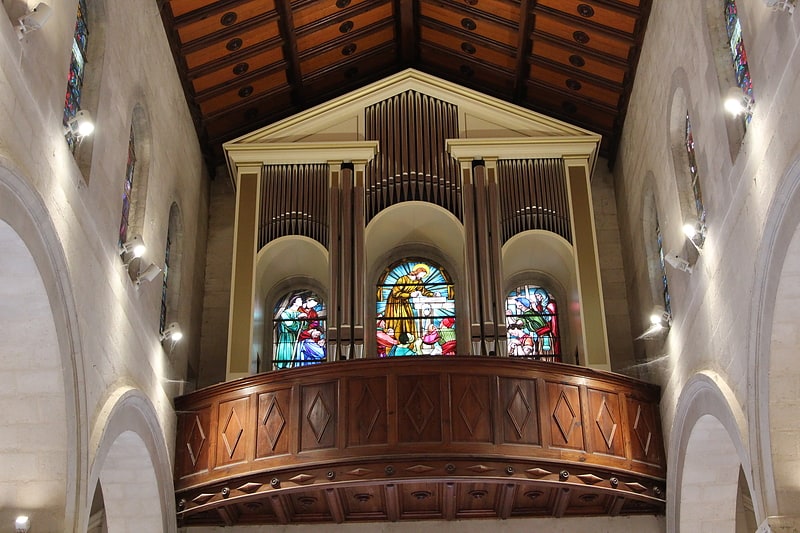
Also known as: כנסיית יוסף הקדוש
Catholic church on a historical site. St. Joseph's Church is a Franciscan Roman Catholic church in the Old City of Nazareth, modern-day Northern Israel. It was built in 1914 over the remains of much older churches. It is located close to the Church of the Annunciation. It was built in the Romanesque Revival style.
The church is built on the site of the Church of Nutrition quoted by the pilgrim Arculfe about 670 in "De locis sanctis" (II, 26), then a church of the crusaders of the Kingdom of Jerusalem, whose vestiges are under the crypt, and a Franciscan church built in the 17th century. This history is described by the Franciscan Quaresmius in his "Historica, theologica et moralis terrae sanctae elucidatio", written between 1616 and 1626, but merely affirms the existence ab antiquo of the tradition of a cult in this place, without giving evidence.[4]
Mount Precipice

Also known as: הר הקפיצה
Scenic mountain with a biblical history. Mount Precipice, also known as Mount of Precipitation, Mount of the Leap of the Lord and Mount Kedumim is located just outside the southern edge of Nazareth, 2.0 km southwest of the modern city center.
It is believed by some to be the site of the Rejection of Jesus described in the Gospel of Luke (Luke 4:29-30). According to the story, the people of Nazareth, not accepting Jesus as Messiah tried to push him from the mountain, but "he passed through the midst of them and went away."
Archaeological excavations in the Qafzeh Cave in the mountain found human remains, whose estimated age is 100,000 years old. The human skeletons were associated with red ochre which was found only alongside the bones, suggesting that the burials were symbolic in nature. Previous to this discovery, scientists believed that human symbolic reasoning evolved much later, about 50,000 years ago.
During the 20th century the mountain was used as a quarry, now abandoned. Highway 60 goes through a tunnel dug in the mountain in the site of the old quarry, connecting Afula and Jezreel Valley (Arabic - Marj Ibn Amer) directly to Nazareth.
On 14 May 2009, Pope Benedict XVI celebrated a Mass on this mountain, during his visit to the Holy Land. 40,000 people participated.[5]
Nazareth Village
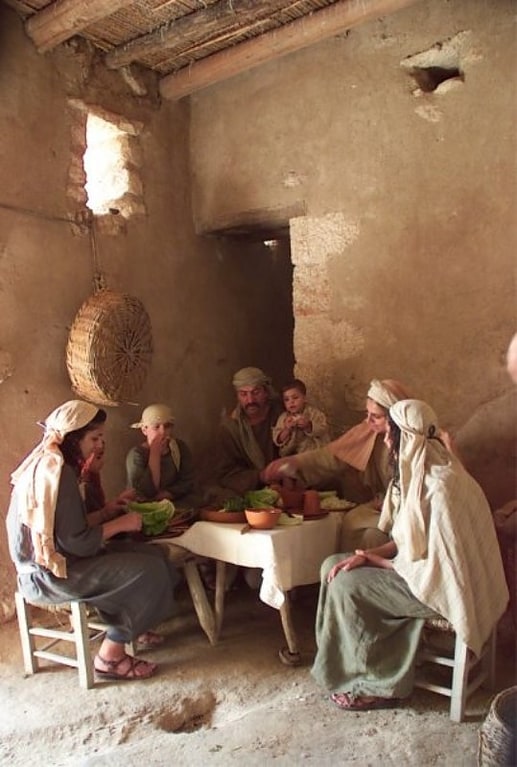
Museum in Nazareth, Israel. Nazareth Village is an open-air museum in Nazareth, Israel, that reconstructs and reenacts village life in the Galilee in the time of Jesus.
The village features houses, terraced fields, wine and olive presses all built to resemble those that would have been in a Galilee village in the 1st century. Muslim and Christian living history enactors dress in period costume and show visitors how farm, domestic, and craft work was performed two thousand years ago.[6]
Address: 5079 St, Nazareth
White Mosque
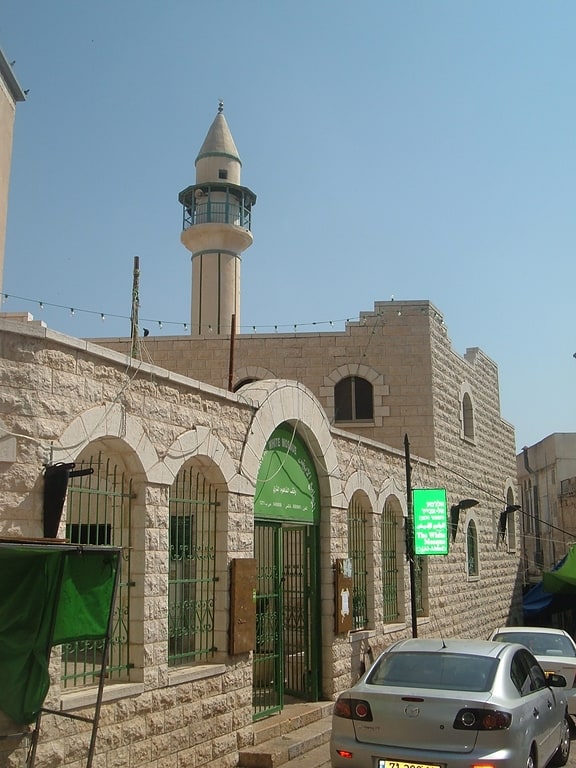
Also known as: המסגד הלבן
Mosque in Nazareth, Israel. The White Mosque is an Ottoman-era mosque in Nazareth, Israel. It is located in Harat Alghama or the "Mosque Quarter" in the centre of Nazareth's Old Market. The mosque's pencil-shaped minaret, cream-coloured walls, and green-coloured trim and dome are an example of the Ottoman architecture that is commonly found throughout the city.[7]
Address: Move 0d71728, Nazareth
Mary's Well
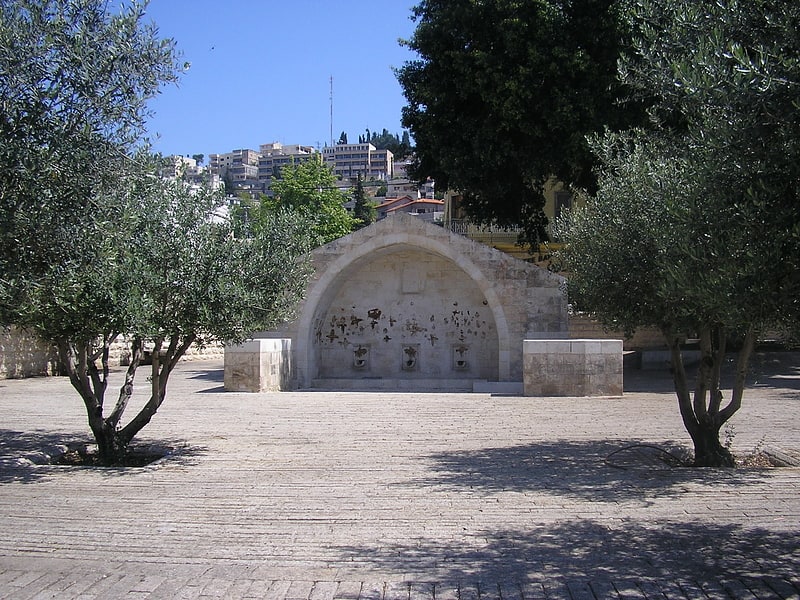
Also known as: מעיין מרים
Historical place in Nazareth, Israel. Mary's Well is reputed to be located at the site where, according to the Catholic tradition, Angel Gabriel appeared to Mary, mother of Jesus and announced that she would bear the Son of God – an event known as the Annunciation.
Found just below the Greek Orthodox Church of the Annunciation in modern-day Nazareth, the well was positioned over an underground spring that served for centuries as a local watering hole for the Palestinian villagers. Renovated twice, once in 1967 and once in 2000, the current structure is a symbolic representation of the structure that was once in use.[8]
Basilica of Jesus the Adolescent
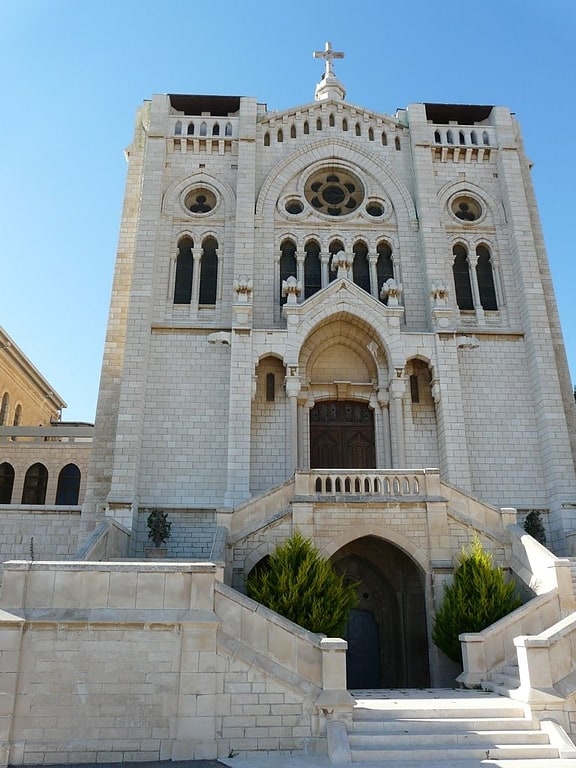
Also known as: הכנסייה הסלזיאנית
Basilica in Nazareth, Israel. The Basilica of Jesus the Adolescent also simply known as the Salesian church, is the name given to a Catholic church in Nazareth in Israel, belonging to the Salesians of Don Bosco. The church is located next to the school of the Salesians. In Gothic style, was built between 1906 and 1923 on a hill called "Mount of the Start" which overlooks the city, where, according to tradition, Jesus spent his youth.
From the terrace of the church there is an exceptional view of the old city of Nazareth, divided (as Jerusalem) in neighborhoods for Orthodox, Roman Catholic and Muslims.[9]
Address: Rehov 5002, Nazareth
Kfar Kedem
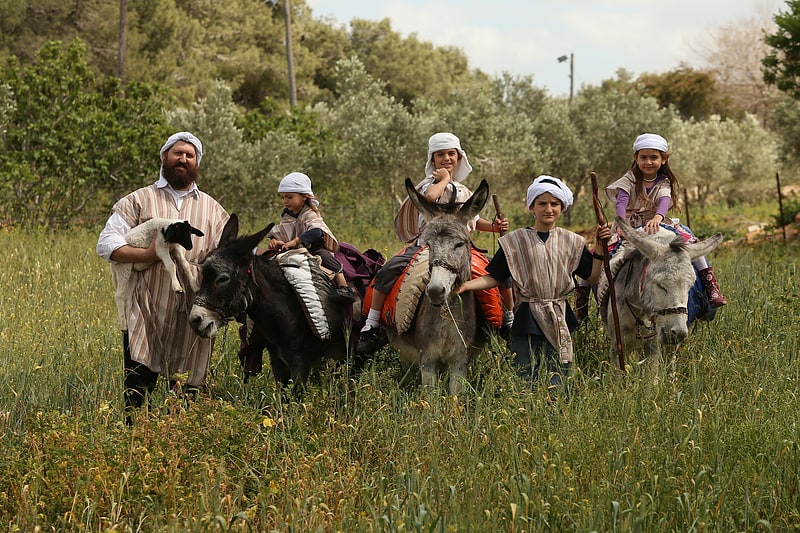
Also known as: כפר קדם
Tourist attraction in Hoshaya, Israel. Kfar Kedem is a tourist center in Israel which reconstructs the everyday life in the Galilee 2000 years ago, during the Mishnah period. Kfar Kedem is located on Route 77, next to the Hamovil intersection. It was established in 1992 in the Hoshaya settlement by Menachem Goldberg. The center includes about 4 acres of vegetation and trees native to the ancient Land of Israel.
The site reconstructs Jewish life in the Galilee during the Mishnah period. It is located next to Sepphoris, which was the home base of the Sanhedrin (the highest Jewish religious court), its scholars, and their leader, Judah the Prince, one of the compilers of the Mishnah.
The site opened in 1992. All visitors start the tour with a short lecture, and immediately afterwards they don Tzitzit, a 4-cornered shawl and a scarf to cover their heads.[10]
Nof HaGalil

City in Israel. Nof HaGalil is a city in the Northern District of Israel with a population of 41,734. Founded in 1957 as Nazareth Illit, it was planned as a Jewish town overlooking the Arab city of Nazareth and the Jezreel Valley. Today, 29% of the city's population is Arab. Its name was changed in 2019 to "Nof HaGalil" following a plebiscite in which 80% of voters, although with low turnout, approved the change.[11]